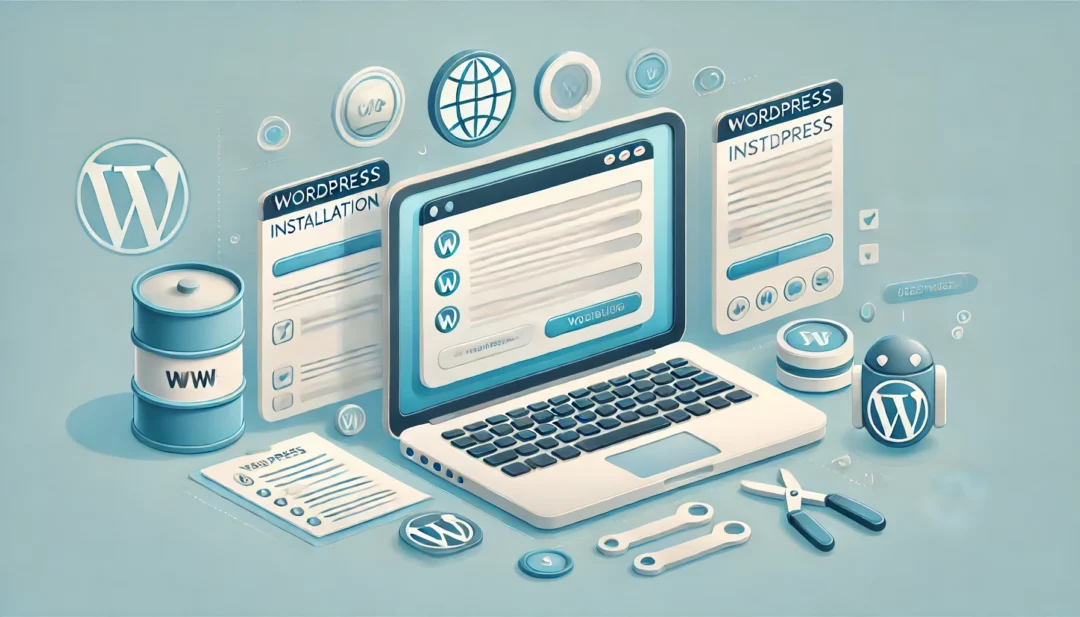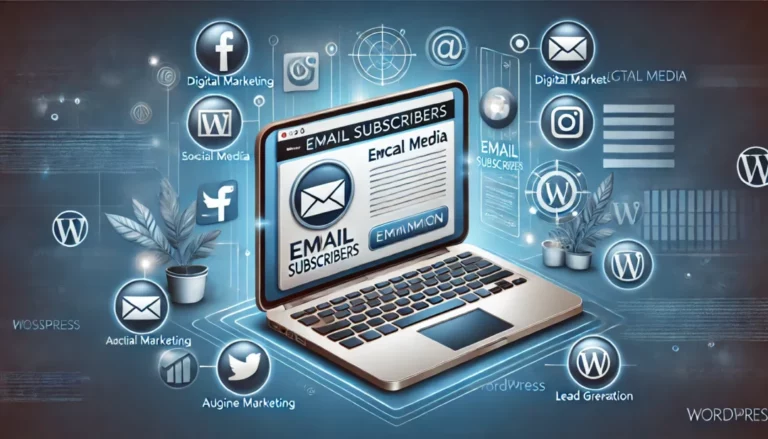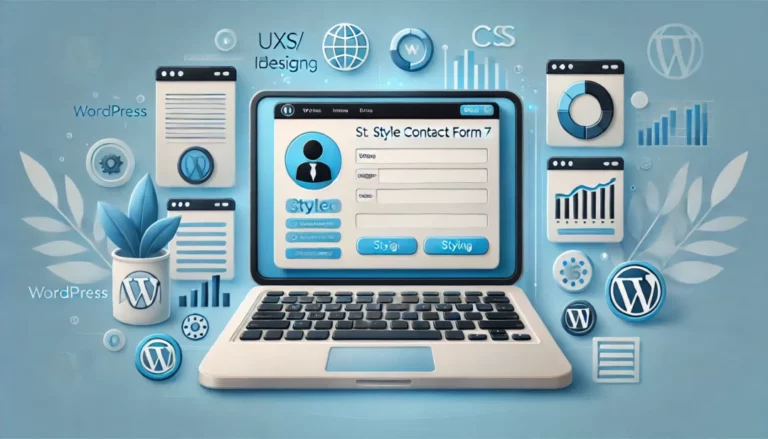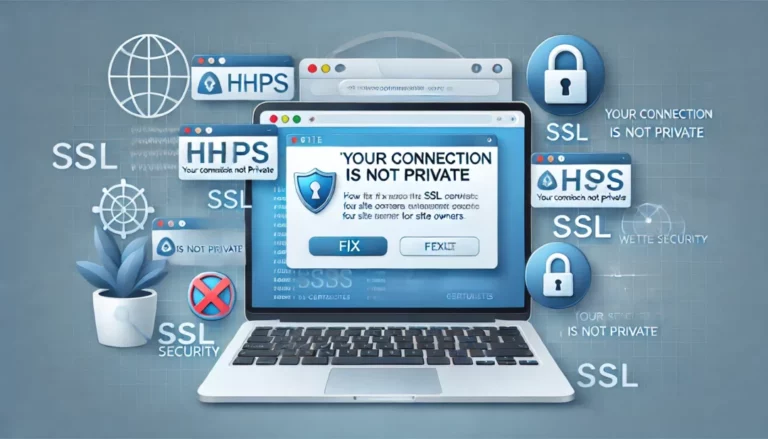
Installing WordPress is easier than you might think, and with just a few steps, you’ll have your website up and running. Whether you’re building a blog, portfolio, or online store, WordPress offers the flexibility and tools to bring your vision to life. All it takes is a little setup, and you’re ready to start customizing.
First, choose a reliable hosting provider and register your domain name. Next, download WordPress and upload it to your hosting account. Then, create a database and configure the installation settings. Finally, log in to your new WordPress site and start designing. Each step is simple and straightforward, even if you’re new to website creation.
By the end of this guide, you’ll have a fully functional WordPress site tailored to your needs. Ready to get started? Let’s break it down into manageable steps so you can launch your site with confidence.
Why Choose WordPress
WordPress offers a versatile, user-friendly platform for building websites. It powers over 43% of all websites globally, according to W3Techs data, proving its effectiveness and popularity. Whether you’re a beginner or an experienced developer, WordPress supports a wide range of needs.
Open-Source and Free
WordPress is open-source software, meaning it’s free to download and customize. Customization is flexible, allowing you to tailor your site to specific requirements without additional licensing fees.
Extensive Theme and Plugin Options
WordPress provides thousands of themes and plugins, both free and paid. Use themes to define your site’s design and layout. Utilize plugins for added functionality, such as SEO optimization (e.g., Yoast SEO), contact forms (e.g., Contact Form 7), and eCommerce (e.g., WooCommerce).
SEO-Friendly Structure
WordPress includes features that improve your site’s SEO. Permalinks, meta tags, and mobile-responsive themes help you rank higher in search results. Plugins like Rank Math and All in One SEO offer further optimization tools.
Scalability and Versatility
WordPress adapts to any project size. Whether it’s a simple blog or a complex eCommerce site, WordPress performs efficiently. Popular websites like TechCrunch and The New Yorker rely on its scalable framework.
Community Support
A large, active community ensures you always have access to help and resources. Solutions to technical issues and learning materials, such as forums, blogs, and tutorials, are readily available.
Frequent Updates and Security
Regular updates enhance WordPress’s functionality and security. Developers release patches that address vulnerabilities, keeping your site secure when updates are applied promptly.
Employing WordPress ensures a robust, adaptable, and supported foundation for your website.
Preparing For Installation
Preparing for WordPress installation ensures a smooth setup process. Focus on selecting the right hosting plan, securing your domain name, and configuring a database.
Choosing A Hosting Provider
Select a reliable hosting provider, as it directly impacts website performance and uptime. Popular options include Bluehost, SiteGround, and HostGator. Look for plans offering 1-click WordPress installation, adequate storage, and SSL certificates. Prioritize hosting tailored for WordPress for better compatibility.
Compare features like server location, bandwidth limits, and pricing. For beginners, shared hosting is budget-friendly. For high-traffic websites, choose VPS or dedicated hosting. Confirm the provider offers robust security and 24/7 customer support.
Registering A Domain Name
Register a domain name that reflects your brand or purpose. Use registrars like Namecheap, GoDaddy, or purchase through your hosting provider. Include keywords, avoid using hyphens or numbers, and stick to widely recognized domain extensions like .com or .org.
Confirm the domain’s availability to prevent conflicts. If unavailable, adjust your chosen name slightly. Many hosting providers offer free domain registration in their packages, saving you costs during setup.
Setting Up A Database
Create a new database to store your WordPress website’s content. If using cPanel, access the “MySQL Databases” section. Enter a unique database name, create a user, and assign full privileges to the user for secure access.
Save your database credentials, as you’ll need them during configuration. When databases aren’t automatically created by your hosting plan, correctly setting one up manually simplifies installation later. Ensure proper user roles to maintain security.
How To Install WordPress Using cPanel
Installing WordPress through cPanel simplifies the process, making it quick and efficient even for beginners. Follow these steps to ensure a smooth installation.
Accessing cPanel And Installing WordPress
- Log Into cPanel
Access your hosting account and navigate to cPanel. Use the credentials provided by your hosting provider to log in. Look for the “cPanel” link in your account dashboard or URL (e.g., “example.com/cpanel”).
- Locate the Auto Installer
Scroll down to the “Softaculous Apps Installer” or “WordPress Installer” section within cPanel. Most hosting providers include this one-click installation feature.
- Start the WordPress Installation
Click on the WordPress icon under the application installer. On the next screen, select “Install Now.” This initializes the setup wizard that guides you through the process.
- Enter Domain Details
Choose the domain where WordPress will be installed. Use the dropdown menu to select your domain or subdomain. For domain installation, leave the “Directory” field blank to install WordPress on the root directory.
- Fill Out Admin Credentials
Provide a username, password, and email address for the WordPress admin account. Choose a strong password for increased security. Set your desired site name and description.
- Choose Settings And Install
Select your desired language, set advanced options if needed (e.g., auto updates, backup schemes), and click “Install.” The system processes the data and completes the setup within a few minutes.
- Access WordPress Dashboard
Log in to your WordPress admin dashboard by visiting “example.com/wp-admin” and entering the credentials you created.
- Update Site Title And Tagline
Navigate to “Settings” > “General” in the dashboard. Update your site title and tagline to reflect your website’s purpose.
- Configure Permalinks
Go to “Settings” > “Permalinks” to configure SEO-friendly URLs. Choose the “Post Name” option for better search engine optimization.
- Install A Theme
Visit “Appearance” > “Themes” and choose a theme that aligns with your website’s design goals. Click “Add New” to browse free themes or upload premium ones.
- Install Essential Plugins
Access “Plugins” > “Add New” to install tools like Yoast SEO, Akismet, or Elementor. Use plugins to enhance functionality and improve site performance.
- Enable Backup And Security Features
Install a security plugin, such as Wordfence, and configure backups using plugins like UpdraftPlus. These safeguard your site against potential risks.
WordPress is now fully configured and ready for customization.
How To Install WordPress Manually
Manual installation of WordPress gives you full control over the setup process. Follow these precise steps to ensure a seamless installation.
Downloading And Uploading WordPress Files
- Download WordPress
Go to the official WordPress website and download the latest version. Save the zip file to your computer.
- Extract Files
Extract the downloaded zip file to access the WordPress files.
- Upload Files Using FTP
Use an FTP client like FileZilla to upload the extracted files. Log in to your server with credentials provided by your hosting provider. Navigate to the root directory, typically named /public_html or /www, and upload all WordPress files there.
Tip: Ensure you upload the files inside the main WordPress folder, not the folder itself.
Configuring wp-config.php File
- Locate wp-config-sample.php
In the uploaded files, find the wp-config-sample.php file in the root directory.
- Rename The File
Rename it to wp-config.php to signal it’s ready for configuration.
- Edit Database Credentials
Open the wp-config.php file in a text editor. Update the following lines with your database details:
'DB_NAME'with your database name.'DB_USER'with your database username.'DB_PASSWORD'with your database password.'DB_HOST'(usually ‘localhost’, but check your hosting provider).
Tip: Double-check credentials to avoid errors during connection.
- Add Authentication Keys
Generate unique keys via the WordPress API, then replace lines starting with define('AUTH_KEY'. Save and upload the updated file.
- Access The Installation Page
Open a web browser and go to your website’s URL. WordPress automatically redirects you to the installation script, usually yourdomain.com/wp-admin/install.php.
- Choose Language
Select your preferred language for WordPress and continue.
- Set Site Information
Fill in your site title, admin username, password, and email. Use a strong password and avoid “admin” as the username for better security.
- Complete Installation
Click “Install WordPress.” A success message appears if all settings are correct.
- Access Dashboard
Log in to your WordPress dashboard using the credentials you just created.
Following these steps ensures a thorough manual WordPress setup with minimal errors.
Additional Tips And Best Practices
Implementing additional steps ensures your WordPress site is secure, efficient, and optimized for success.
Securing Your WordPress Installation
Protect your WordPress site to prevent vulnerabilities and potential attacks.
- Use Strong Passwords
Create complex admin passwords that include letters, numbers, and special characters. Avoid generic terms or predictable combinations.
- Update Regularly
Ensure WordPress core files, themes, and plugins are updated frequently. Updates often include security patches and performance enhancements.
- Install an SSL Certificate
Activate SSL (Secure Sockets Layer) to encrypt data transfer between your site and users. Most hosting plans include free SSL installation.
- Limit Login Attempts
Restrict multiple failed login attempts using plugins like Limit Login Attempts Reloaded. This prevents brute force attacks.
- Use Security Plugins
Deploy trusted security plugins like Wordfence Security, Sucuri Security, or iThemes Security to actively monitor and protect your website.
- Change Default Login URLs
Customize the /wp-admin or /wp-login.php URL to reduce unauthorized access attempts.
Optimizing Performance After Installation
Enhance your site’s speed and functionality for a superior user experience.
- Choose Lightweight Themes
Select optimized themes like Astra or GeneratePress that ensure fast loading times without compromising design.
- Install a Caching Plugin
Use caching tools like WP Super Cache or W3 Total Cache to reduce server load and improve site speed.
- Optimize Images
Compress image files using plugins like Smush or ShortPixel. This reduces file sizes without loss of quality.
- Enable a Content Delivery Network (CDN)
Activate a CDN like Cloudflare to distribute content across multiple servers, reducing latency and speeding up delivery.
- Minimize Plugins and Scripts
Deactivate unnecessary plugins and use tools like Asset CleanUp to disable unused scripts on specific pages.
- Configure Updates and Backup Options
Set automatic backups using plugins like UpdraftPlus. Regular backups ensure data is secure during unexpected issues.
Each of these practices optimizes the functionality and security of your WordPress site.
Conclusion
WordPress empowers you to create a website that’s both functional and customizable, no matter your experience level. With its user-friendly interface and extensive features, it’s the ideal platform to bring your vision to life.
By taking the time to install and set it up properly, you’re setting the foundation for a secure, optimized, and scalable site. Whether you choose the cPanel method or a manual installation, the process is straightforward and rewarding.
Now’s the time to start building your WordPress site and explore its endless possibilities.
Frequently Asked Questions
1. What is WordPress, and why should I use it?
WordPress is a free, open-source website-building platform used by over 43% of all websites globally. It’s beginner-friendly, customizable, SEO-optimized, and offers thousands of themes and plugins to enhance your site’s design and functionality. WordPress is scalable, secure, and supported by a vast community, making it an excellent choice for projects of any size.
2. What do I need before installing WordPress?
Before installing WordPress, you need a hosting plan, a registered domain name, and access to a control panel (such as cPanel). It’s also essential to configure a database for WordPress to function properly.
3. How do I install WordPress using cPanel?
To install WordPress using cPanel, log in to your hosting account, locate the WordPress auto-installer, and follow the prompts. Key steps include selecting your domain, creating admin credentials, and finalizing settings. Once done, you can access your WordPress dashboard to start customizing your site.
4. Is it better to manually install WordPress?
Manual installation gives you more control and ensures a secure setup. You need to download WordPress, upload files via FTP, configure the wp-config.php file, and complete the setup in your browser. It’s a good option for advanced users but isn’t necessary for most beginners.
5. How do I optimize my WordPress site for speed?
To optimize your WordPress site, use lightweight themes, install caching plugins, compress images, enable a CDN, and minimize unnecessary scripts or plugins. These steps will improve load times and overall site performance for users and search engines.
6. How do I secure my WordPress site?
Secure your WordPress site by using strong passwords, updating themes and plugins regularly, installing an SSL certificate, and using trusted security plugins. Additional steps include changing the default login URL and limiting login attempts to prevent unauthorized access.
7. Can I change my WordPress site theme later?
Yes, you can change your WordPress site theme anytime. Simply go to the WordPress dashboard, navigate to “Appearance > Themes,” and activate a new theme. All content remains intact, though layout and design may change based on the new theme.
8. What are essential plugins for beginners?
Essential plugins include security plugins like Wordfence, backup tools like UpdraftPlus, SEO plugins like Yoast SEO, and caching plugins like WP Super Cache. These help improve security, optimize site performance, and enhance user experience.
9. How often should I update my WordPress site?
You should update your WordPress core files, themes, and plugins regularly to ensure security, compatibility, and performance. Frequent updates protect your site from vulnerabilities and improve functionality.
10. How can I back up my WordPress site?
Use a backup plugin like UpdraftPlus or BackupBuddy to automate regular backups. Many hosting providers also offer backup services. Ensure backups are stored in a cloud location to safeguard your data.



